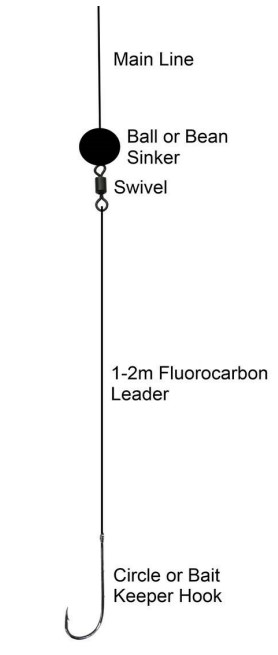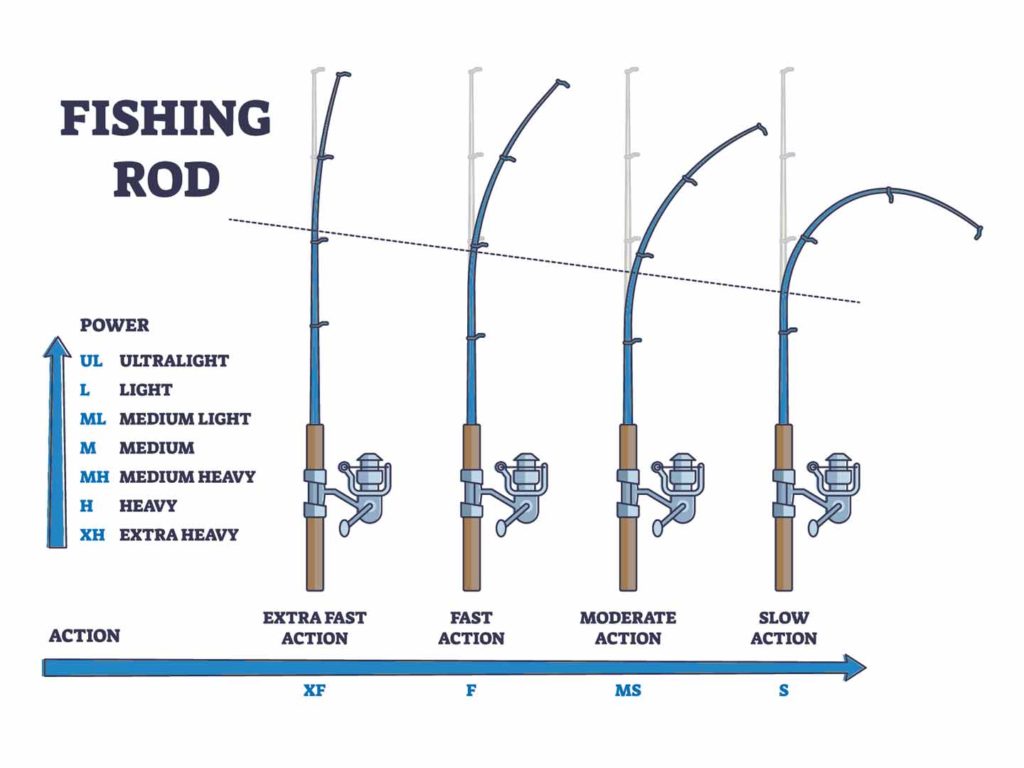Fishing is one of the most rewarding outdoor activities that one can engage in. It can be a great way to escape the hustle and bustle of everyday life, and connect with nature. However, setting up a fishing rod can be a daunting task, especially for beginners. If you are new to the world of fishing, don’t worry, you’re not alone. In this guide, we will take you through the step-by-step process of setting up a fishing rod, from selecting the right equipment to casting your first line.
The first step in setting up a fishing rod is to select the right equipment. There are different types of fishing rods and reels, each designed for a specific purpose. Choosing the right equipment can make all the difference between a successful and unsuccessful fishing trip. With this guide, we will help you identify the right gear for your needs, and walk you through the process of setting it up. So, whether you’re planning a fishing trip with friends or family, or just looking to spend some time alone by the water, this guide will provide you with all the information you need to set up your fishing rod like a pro.
How to Set Up a Fishing Rod for Beginners?
- Choose the right rod and reel for the type of fishing you plan to do.
- Attach the reel to the rod by matching the reel seat to the reel foot.
- Attach the fishing line to the reel by tying a knot and spooling the line onto the reel.
- Attach the rod guides and tie on a hook or lure with a fishing knot.
- Add any additional tackle, such as weights or bobbers, and adjust the drag on the reel.

How to Set Up a Fishing Rod for Beginners?
Fishing is a relaxing and enjoyable hobby that can be enjoyed by people of all ages. However, if you’re a beginner, it can be challenging to know how to set up your fishing rod correctly. This article will provide you with a step-by-step guide on how to set up a fishing rod for beginners, so you can start catching fish in no time.
Step 1: Select the Right Equipment
Before you can set up your fishing rod, you need to make sure you have the right equipment. The essential items you’ll need include a fishing rod, reel, fishing line, hooks, sinkers, and bait. When selecting your equipment, make sure you choose the right size and weight. A lightweight rod is ideal for beginners, as it’s easier to handle and casts accurately.
Once you have your equipment, you need to assemble your rod. Start by attaching the reel to the rod, making sure it’s securely fastened. Next, thread the line through the guides on the rod, making sure it’s tight and secure. Attach the hook to the line, followed by the sinker if necessary. Finally, attach the bait to the hook, and you’re ready to start fishing.
Step 2: Spool Your Reel
The next step is to spool your reel with fishing line. Start by opening the bail on your reel, then tie the end of the fishing line to the spool. Hold the line tight to prevent it from tangling, and start winding the line onto the spool. Make sure the line is evenly distributed across the spool, and stop when you have enough line for your needs.
Step 3: Tie the Knots
Tying knots is an essential skill for any angler. The first knot you’ll need to tie is the arbor knot, which attaches the line to the spool. Next, tie a knot in the line to attach the hook. There are many different types of knots you can use, but the most common is the improved clinch knot. Finally, attach the sinker if necessary using a sinker slide or a swivel.
Step 4: Adjust Your Drag
Your drag is the mechanism that allows the line to be released from the reel when a fish pulls on the line. It’s essential to adjust your drag correctly to prevent the line from breaking. To adjust your drag, start by tightening it all the way, then loosen it just enough so that the line can come off the reel smoothly when a fish pulls on the line.
Step 5: Cast Your Line
Now that your rod is set up, it’s time to cast your line. Stand with your feet shoulder-width apart, and hold the rod with your dominant hand. With your other hand, hold the spool in place. Pull the rod back over your shoulder, then quickly flick it forward, releasing the line as you do so. Practice casting in an open area until you get the hang of it.
Tips for Beginner Anglers
Tip 1: Practice Casting
Casting is one of the most important skills for anglers to master. Practice casting in an open area before you head out to the water. This will help you get the hang of it and prevent tangles and other problems.
Tip 2: Be Patient
Fishing requires a lot of patience. Don’t get discouraged if you don’t catch anything right away. Keep trying, and eventually, you’ll have success.
Tip 3: Pay Attention to the Weather
The weather can have a significant impact on fishing. Pay attention to the forecast and plan your fishing trips accordingly. Overcast days are often the best for fishing, as the fish are more likely to be feeding.
Frequently Asked Questions
In this section, we will go through some common questions about how to set up a fishing rod for beginners.
What are the components needed to set up a fishing rod?
There are a few basic components you will need to set up a fishing rod: a fishing reel, fishing line, fishing rod, and some bait or lures. The fishing reel is attached to the fishing rod, and the fishing line is threaded through the guides on the rod. Finally, the bait or lure is attached to the end of the fishing line.
It’s important to choose the right size and type of fishing line for the type of fishing you’ll be doing, as well as the size and weight of the fish you’re targeting. You’ll also want to choose a fishing rod that is suited to your skill level and the type of fishing you’ll be doing.
How do I attach the fishing reel to the fishing rod?
To attach the fishing reel to the fishing rod, first, make sure the reel foot is aligned with the reel seat on the rod. Then, slide the reel foot into the reel seat and tighten the locking mechanism to secure the reel in place.
Make sure the reel is securely attached to the rod and that the handle is facing the correct direction. You may need to adjust the position of the reel seat to ensure the handle is positioned correctly for your dominant hand.
How do I thread the fishing line through the guides on the fishing rod?
To thread the fishing line through the guides on the fishing rod, start at the tip of the rod and work your way down towards the reel. Tie the end of the fishing line to the tip of the rod using a knot, then pass the line through the guides one at a time, making sure the line is tight and secure as you go.
Be sure to follow the manufacturer’s instructions for the specific type of fishing line you’re using, as different lines may require different knot-tying techniques or threading methods.
How do I choose the right bait or lure for my fishing trip?
The type of bait or lure you choose will depend on the type of fish you’re targeting and the conditions you’ll be fishing in. Some common types of bait include worms, minnows, and crickets, while lures can include spinners, jigs, and plugs.
Do some research on the type of fish you’ll be targeting and the habitat they live in to choose the best bait or lure for your fishing trip. You may also want to consider the time of day, weather conditions, and water temperature when selecting your bait or lure.
How do I cast my fishing line?
To cast your fishing line, hold the rod with both hands and place your thumb on the spool of the reel. Pull the rod back behind your head, then quickly bring it forward while releasing your thumb from the spool to allow the line to fly out towards your target.
Practice your casting technique in an open area before you head out on your fishing trip, and be sure to use caution when casting around other people or objects to avoid injury or damage to property.

How to String, Rig, and Set Up a New Fishing Rod with Line, Bobber, Weights, and Hook
In conclusion, setting up a fishing rod for beginners may seem daunting at first, but it is actually a simple process that can be mastered with a little practice. By following the step-by-step guide outlined in this article, you can set up your fishing rod with ease and start catching fish in no time.
Remember, the key to successful fishing is not just about having the right equipment, but also about patience, practice, and a willingness to learn. So, grab your fishing rod, head out to your favorite fishing spot, and enjoy the thrill of catching your first fish. With a little bit of effort and perseverance, you can become a skilled angler and experience the joys of fishing for years to come.
